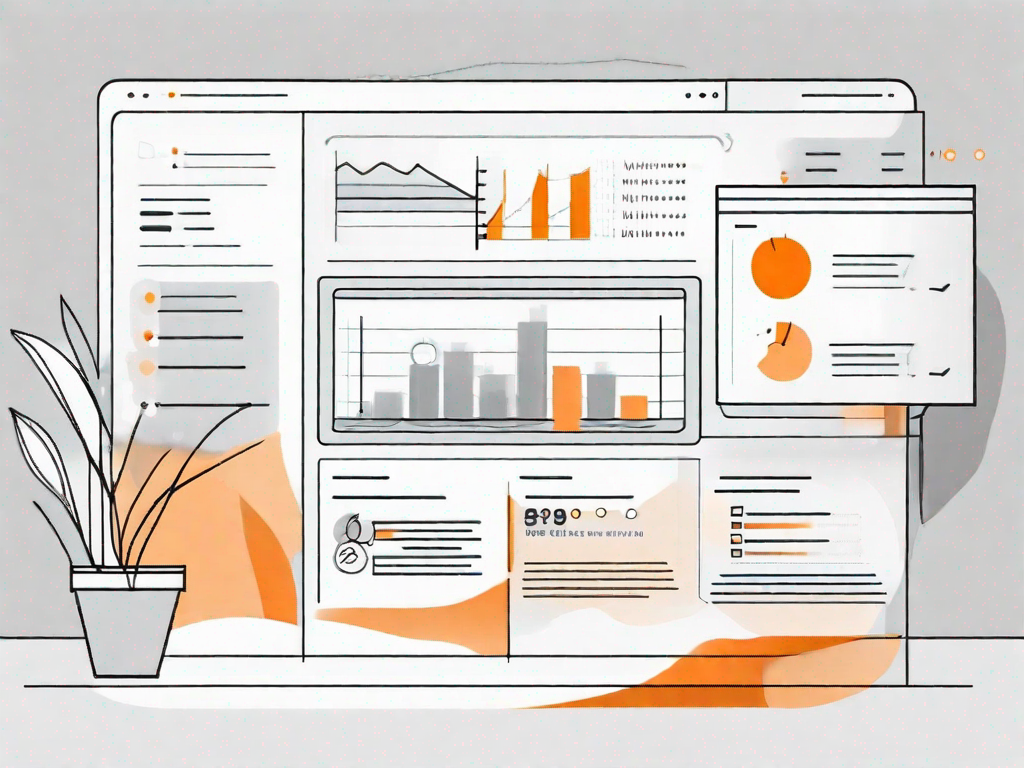.svg)
How to migrate a WordPress site
.svg)

Migrating a WordPress site can be a complex task, requiring careful planning and execution. Whether you're moving your site to a new hosting provider or simply need to transfer it to a different domain, understanding the process is crucial. In this guide, we'll take you through the step-by-step process of migrating your WordPress site, from understanding the concept of migration to troubleshooting common issues that may arise.
Understanding WordPress Migration
Before diving into the technical aspects of WordPress migration, it's important to have a clear understanding of what it entails.
WordPress migration refers to the process of moving your entire WordPress website from one location to another. This includes transferring all your files, databases, and settings, ensuring that your site remains intact and fully functional in its new environment.
When it comes to WordPress migration, there are a few key considerations to keep in mind. Firstly, it's crucial to have a backup of your website before initiating the migration process. This ensures that you have a copy of your site in case anything goes wrong during the transfer. Additionally, it's important to thoroughly test your site after the migration to ensure that all functionalities are working as expected.
Why Might You Need to Migrate Your Site?
There are several reasons why you might need to migrate your WordPress site. One common scenario is outgrowing your current hosting provider. As your website grows and attracts more visitors, you may find that your current hosting plan is no longer able to handle the increased traffic. In such cases, migrating to a more reliable and scalable hosting solution becomes necessary to ensure optimal performance and user experience.
Another reason for migration could be rebranding your business. If you decide to change your company name or logo, it's important to reflect these changes on your website as well. This might involve migrating your site to a new domain or subdomain, updating the design and content to align with your new brand identity.
Furthermore, there might be instances where you need to merge multiple WordPress sites into one. This could happen if you have acquired another business or if you have separate websites for different product lines and want to consolidate them. In such cases, a migration process is necessary to bring all the content, settings, and functionalities together under one unified website.
Whatever the reason for migration, understanding the need is essential in order to plan and execute the process effectively. It's important to have a clear strategy in place, outlining the steps involved in the migration and considering any potential challenges that may arise.
Preparing for Your WordPress Site Migration
Proper preparation is key to a successful WordPress site migration. Before you begin the process, there are a few important steps you'll need to take.
First and foremost, it is crucial to understand the importance of backing up your WordPress site. This step cannot be emphasized enough. Creating a backup ensures that you have a copy of your site's files and databases in case anything goes wrong during the migration process. It provides you with a safety net, giving you peace of mind knowing that you can always revert back to the previous version if needed.
Fortunately, there are numerous plugins available that can assist you in creating a comprehensive backup of your WordPress site. These plugins offer a user-friendly interface and allow you to easily schedule regular backups, ensuring that your data is always protected. Some popular backup plugins include UpdraftPlus, BackupBuddy, and Duplicator.
Backing Up Your WordPress Site
Before making any changes to your site, it's crucial to create a backup. This ensures that you have a copy of your site's files and databases in case anything goes wrong during the migration process. There are numerous plugins available that can assist you in creating a comprehensive backup of your WordPress site.
Once you have chosen a backup plugin that suits your needs, it's time to configure it. You'll need to decide where you want to store your backups. Options include cloud storage services like Dropbox, Google Drive, or Amazon S3, as well as downloading the backup files directly to your computer. It's important to choose a secure location for your backups to ensure the safety of your data.
After configuring the backup plugin, you can initiate the backup process. Depending on the size of your site and the amount of data it contains, this process may take some time. It's important to be patient and let the plugin complete the backup without interruption.
Choosing the Right Migration Tools
When it comes to WordPress migration, having the right tools at your disposal can make a world of difference. There are several migration plugins available that can automate the process and simplify the technical aspects. Take some time to research and choose a reliable migration plugin that aligns with your specific needs.
One popular migration plugin is All-in-One WP Migration. This plugin allows you to export your entire WordPress site, including the database, media files, plugins, and themes, into a single file. You can then import this file into your new WordPress installation, making the migration process seamless and efficient.
Another option is the Duplicator plugin, which offers a simple and straightforward migration process. With Duplicator, you can create a package of your site, including all its files and the database, and then easily transfer it to a new location. The plugin takes care of updating all the necessary URLs and file paths, ensuring that your site functions properly after the migration.
Before choosing a migration plugin, it's important to consider your specific requirements. Some plugins may offer additional features, such as the ability to migrate multisite installations or handle large-scale migrations. By carefully evaluating your needs and comparing the available options, you can select the migration tool that best suits your requirements.
Step-by-Step Guide to Migrating Your WordPress Site
Now that you've prepared for the migration, it's time to dive into the step-by-step process of moving your WordPress site.
Installing Your Migration Plugin
The first step in migrating your WordPress site is installing and activating your chosen migration plugin. Once installed, the plugin will provide you with a user-friendly interface that simplifies the migration process.
Exporting Your WordPress Site
With your migration plugin installed, you'll need to export your existing WordPress site. This process typically involves generating a migration file that contains all your site's files and databases. The plugin will guide you through this process, ensuring that all necessary data is included in the export file.
Importing Your WordPress Site to the New Host
After exporting your site, it's time to import it to the new host. This process varies depending on your hosting provider and migration plugin. Generally, you'll need to create a new WordPress installation on the new host and use the migration plugin to import your site's export file. The plugin will handle the database import and file transfer, ensuring that your site is seamlessly transferred to the new environment.
Troubleshooting Common Migration Issues
While WordPress migration is typically a smooth process, issues can arise. Here are some common issues and troubleshooting steps to help you address them.
Dealing with Broken Links Post-Migration
After migration, it's common for some links on your site to be broken or missing. This can occur due to changes in file paths or discrepancies in the new environment. To fix broken links, you can use a plugin or manually update the paths in your site's code or database.
Resolving Database Connection Issues
In some cases, you may encounter database connection issues after migrating your site. This can manifest as error messages or a blank screen. To resolve this, ensure that the database credentials in your site's configuration files are correct. If necessary, update the credentials based on your new host's specifications.
Post-Migration Steps
Once your WordPress site has been successfully migrated, there are a few additional steps you'll need to take to ensure everything is functioning correctly.
Checking Your Site's Functionality
After migration, thoroughly test your site to ensure that all pages, plugins, and functionalities are working as intended. Click through your site, submit forms, and perform various actions to identify any issues that may have been introduced during the migration process.
Setting Up Redirects
If you've changed your domain name or altered the structure of your site, setting up redirects is crucial. This ensures that visitors who try to access your old URLs are automatically redirected to the corresponding pages on your new site. Redirects can be set up through plugins or via your site's .htaccess file.
Updating Your Domain Name System (DNS)
If you've changed your domain name or hosting provider, you may need to update your domain name system (DNS) settings to point to your new host. This step ensures that your domain name resolves to your new website location. Consult your domain registrar or hosting provider for specific instructions on updating your DNS settings.
By following this comprehensive guide, you'll be well-equipped to migrate your WordPress site with confidence. Remember to back up your site, choose the right migration tools, and follow the step-by-step process outlined here. With careful planning and execution, your WordPress site will seamlessly transition to its new home, allowing you to continue growing and evolving your online presence.
Let's
Let’s discuss how we can bring reinvigorated value and purpose to your brand.







.svg)